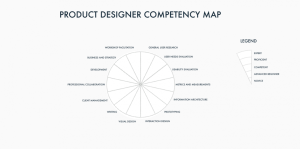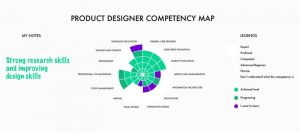“If you want to be successful, don’t seek success – seek competence, empowerment; do nothing short of the best that you can do.” – Jaggi Vasudev
Introduction
For any marriage, preparation is to prepare a list of all the possible activities like the guest list, marriage hall booking, catering arrangement, invitation card and so many. Once the list is prepared, the next is to assign the responsibility and the time frame to complete the activity. At the periodic interval, the different arrangements are verified for their effectiveness and any support where needed.
Objective
An organization is a collection of multi-skilled people performing multiple tasks. In the current world, HR people struggle with unlimited difficulties in finding a skilled person matching the work demands of the organization. The role of HR is to find the skillset gap between the employee and employer. And there comes the competency mapping that fills out the skill gap of the employees by providing the right set of training to the employees resulting in better work performance.
Our highly VUCA (Volatile, Uncertain, Complex, Ambiguous) environment demands that the competency of the personnel at the different positions should be ascertained and monitored periodically based on their Education, Experience, Training and Skillset.
Read More: https://bit.ly/PESTLEANALYSIS
Definition:
Competence (ISO 9000: 2015, Cl 3.10.4): Ability to apply knowledge and skills to achieve intended results
Skill (ISO 30401: 2018, Cl 3.30): Learned capacity to perform a task to a specified expectation
Knowledge (ISO 30401: 2018, Cl 3.25): Human or organizational asset enabling effective decisions and actions in the context
Detailed Information
Competency Mapping is defined as the process of identifying the key competencies, which can perform efficiently, achieve the goals of the organization & make the organization successful. One of the main goals is to gain awareness of the current skills inventory in the organization, as well as identify existing skill gaps.
Competency mapping identifies an individual’s strengths and weaknesses. The aim is to enable the person to better understand himself or herself and to point out where career development efforts need to be directed.
There are 4 key indicators through which competency can be defined and monitored. They are
- Education: A person recruited for signing any financial document like balance sheet, profit & loss statement should be CA (Charted Accountant)
- Experience: A person responsible for conducting internal system audits should have an industrial experience as well as experience in conducting audits
- Training: After welding operation, the quality inspector should be trained for doing the NDT (Nondestructive Testing) like MPI (Magnetic Particle Inspection), Hydro test etc.
- Skill: HR personnel should have the skill to listen and RESPOND and not REACT
Read More: https://bit.ly/CompetencyRequirement
Industry Example:
Production Engineer: Moulding Shop
Education: Diploma or Engineer in Plastic Technology/Mechanical
Experience: At least 2 years in any plastic moulding manufacturing
Training: How to set up the moulds, how to do job setup, how to achieve the production target
Skill: Identify the moulded component defect, Statistical studies
7 Step Process of Competency Mapping:
Step 1: Develop a framework for the core competency of the organization. The criteria for defining competency can be based on ‘Education, Experience, Training and Skill.’
Step 2: Set the competency assessment levels for all designations. Based on ‘Education, Experience, Training and Skill’, define the desired level for each position
Step 3: Prepare the job description based on the competency mapping model. It will help the individuals to understand the duties and the relationships associated with the job role. The main advantage of competency is to evaluate the employee’s performance over the same criteria.
Step 4: Map the competency of the existing employees against the list of core competencies and competency scales. It will identify the key gap between the desired and actual competencies and their level. Also, the gap analysis and performance appraisal process will identify the strength and weaknesses of the individual.
Step 5: Bridge the gap between the competency level by providing training to fill the gap and it will also help in improving the productivity of the existing employees
Step 6: Verify the effectiveness of the training and check whether the desired competency and its level have been achieved or not
Step 7: Recruitment of the candidates for a new employee for any position in the organization based on the identified competency requirement and its level


Read More: https://bit.ly/WhatisCyberSecurity
4 Key Purpose of Competency Mapping:
- know attributes that will improve employee productivity. Example: In the production process, the moulds change over time is very high. What kind of training is required so that the change over time can be reduced?
- identify relevant strengths and areas of development in employees. Example: For the existing employees, for boosting their confidence like leadership training
- gauges candidate suitability for a role/position. Example: Giving additional responsibility of the Purchase process to the Sales Head
- to anticipate developmental needs to keep employees and the organization‘ future-ready’. Example: A production head may be groomed to head the new greenfield project
3 Key Benefits of Effective Competency Mapping:
- get better at linking business strategies to individual performance
- invest in talent development NOT from a myopic view of current performance gaps but the wide-angle of the organizational vision
- bring tangibility to health and readiness assessments of individuals, teams, departments, and organization
Read More: https://bit.ly/WhatEmbeddedSoftware
How to Conduct Competency Mapping?
There are various methods through which effective competency mapping can be conducted. 4 important methods are:
- Critical Incidents Technique: A process of systematically identifying the behaviour that contributes to the success or failure of the competencies in specific situations. Example: Negotiation during the settlement of the wage agreement with the trade unions
- Interview: Every organization has different techniques for interviewing the competencies as a part of competency mapping. Example: Product design capability by using customer prescribed software like Catia.
- Questionnaire: A certain technique that is followed by the organization that prepares a list of questions that the users would fill in a return. Example: Identifying the core leadership skill related to mindfulness.
- Psychometric Tests: The sole focus of psychometric assessment is that many organizations use this part of the selection process, where there’s a natural wariness about the unknown. Example: During the selection of GET (Graduate Engineer Trainee), the number of candidates is very high. The psychometric test helps to eliminate unwanted candidates.
Importance of Competency Mapping:
- For employees, it increases the awareness of existing skill sets as well as skill gaps in the organization
- To ensure that the employees are going in the right direction
- To guide the competencies to increase their productivity
- It’s an approach to building trust between the employees
- Competency helps the employees to reach the organizational objectives
- It avails to integrate management practices
Read More: https://bit.ly/DiagramTurtleDiagram
Industry Challenges:
- How often the competencies are defined based on Education, Experience, Training and Skill?
- How often the selection of the personnel or their posting in any process is based on Education, Experience, Training and Skill?
- How often these competencies are regularly reviewed, monitored and updated?
Read More: https://bit.ly/SWOTAnalysisEV
References:
ISO 9001: 2015
IATF 16949: 2016
IATF 16949: 2016, Sanctioned Interpretation & FAQ
ISO 10015: 2019, Quality Management-Guidelines for competence management and people development
Industry Experts
This is the 161st article of this Quality Management series. Every weekend, you will find useful information that will make your Management System journey Productive. Please share it with your colleagues too.
In the words of Albert Einstein, “The important thing is never to stop questioning.” I invite you to ask anything about the above subject. Questions and answers are the lifeblood of learning, and we are all learning. I will answer all questions to the best of my ability and promise to keep personal information confidential.
Your genuine feedback and response are extremely valuable. Please suggest topics for the coming weeks.

Leave a Reply
You must be logged in to post a comment.